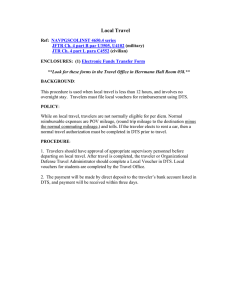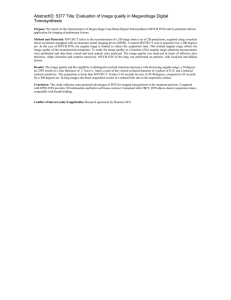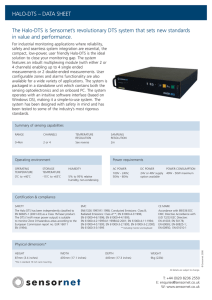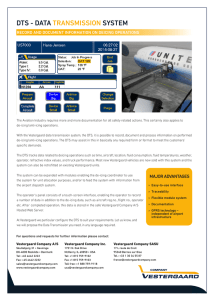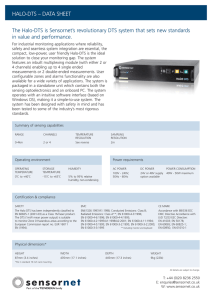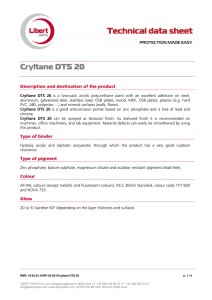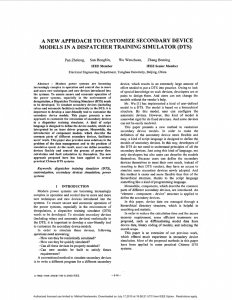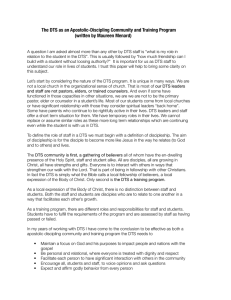DTS Project Management A new approach Gracemary Smulewitz
advertisement
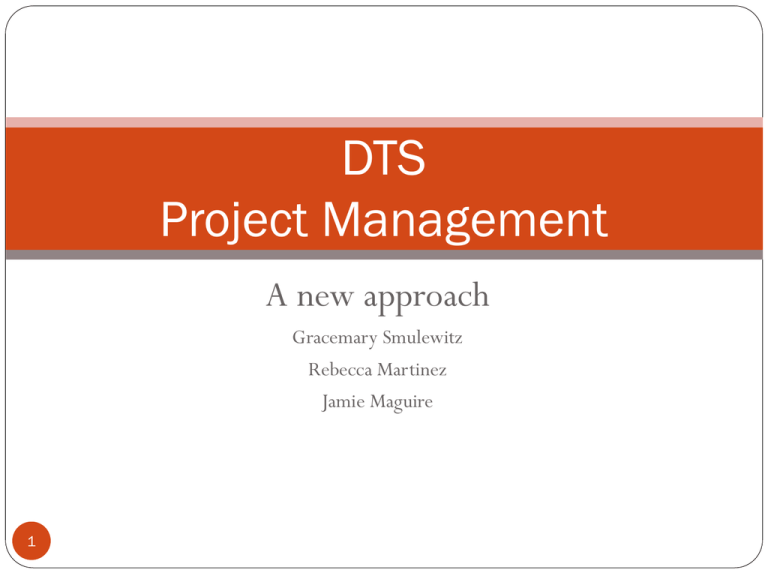
DTS Project Management A new approach Gracemary Smulewitz Rebecca Martinez Jamie Maguire 1 Why Project Management? While we still perform our routine responsibilities, much of our time is also committed to projects. We have learned from experience that projects have to be defined and differentiated from the routine. The number of projects being proposed and/or worked on has increased dramatically. There are more people looking at our data and anticipating accuracy. There are better tools to gather data, identify problems and to solve them. For several years we have had an extremely tight operating budget and we expect our accounting to be real. There is a more collaborative environment among departments so that project workflows are more efficient , therefore more can be done. 2 Our Approach In general, we are defining projects as work that has a considerable volume and has an anticipated start and end date. We define parameters to bring a project to a successful conclusion. We begin by identifing the project and by determining the who, what, where, and when? Implementation Tracking and Monitoring 3 Project Planning- Step 1: Identifying the Project What is the impetus for the project? What is the priority? Will the project require work or coordination with other departments? When can the project be started/completed? What’s the most efficient workflow? 4 Project Planning- Step 2: The Who, What, Where & When? What is the actual work and what skills are required to do it? Which Teams will be affected? Who will be the lead for the project? What size of workforce is needed to complete the project in a timely and effective manner? Who has the skills to perform the work? If more workforce is needed, can it come from within the department? Is special training required? How will the project effect existing workflows for routine responsibilities or projects already in progress? 5 Project Planning- Step 3: Implementation, Tracking & Monitoring An initial meeting of all involved is scheduled Project is added to the Project Spreadsheet – a tool to describe, plan and track the progression of the project. Continuous monitoring is conducted by the Project Coordinator DTS Team Leaders’ Meetings provide a forum for sharing progress, set-backs, and successes. 6 DTS Project Spreadsheet 7 What factors facilitate the project’s success? Being open minded Having a positive approach Fostering a collaborative environment Cultivating the authority of the project lead 8 Positive Outcomes Staff gains greater exposure to different types of work in DTS – keeps us enthusiastic about our jobs! Skills gained from project work can be built upon and can be transferred to other work within the department. Geography is no longer a barrier thanks to shared tools, cross-training, and skills learned through experience. Cultivates a dynamic, flexible workforce. 9

